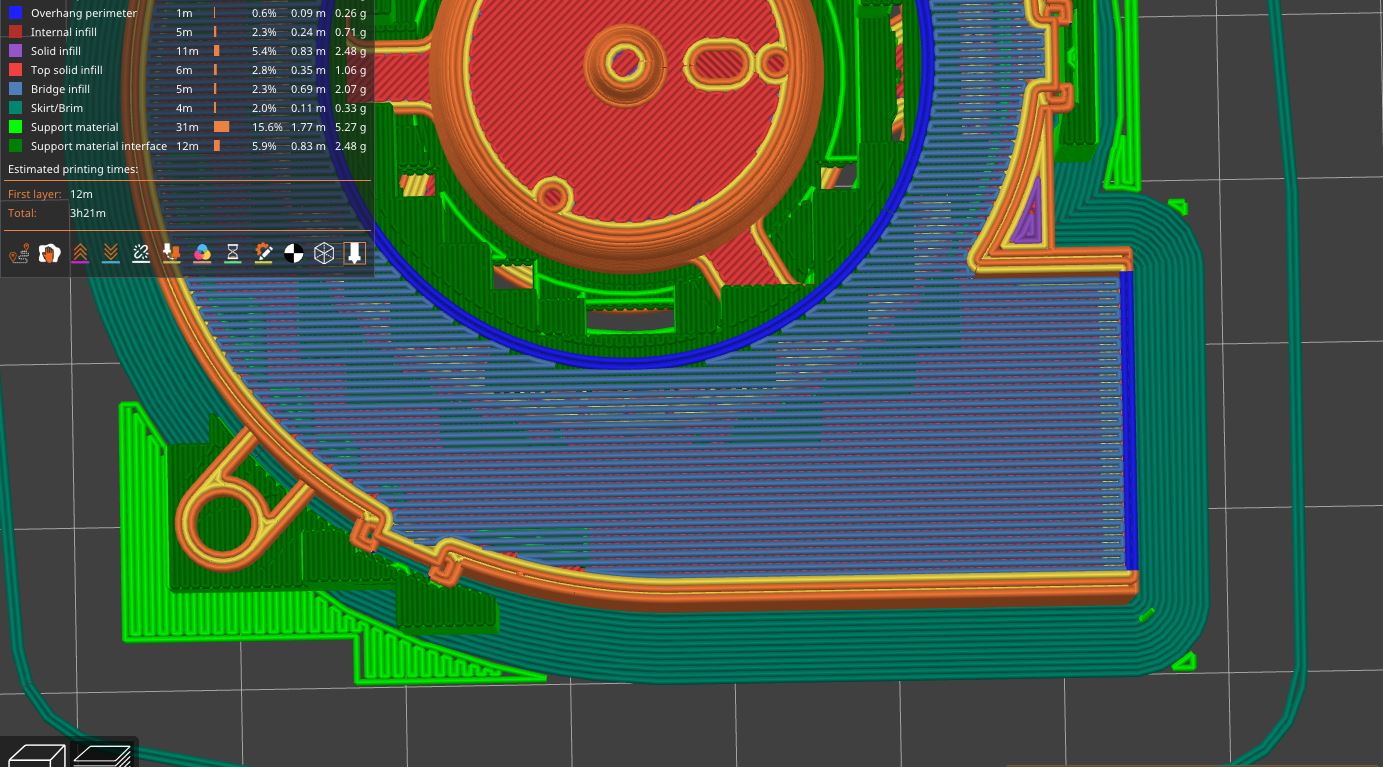Use support enforcers
Thanks. Is there also the option to rotate the pattern direction by 90° so it takes the short distances for bridges?
"fill angle" under infill settings.
Fill angle didn't change this as Prusaslicer sees this as a bridge.
Bridges will be printed using the best direction PrusaSlicer can detect, so this setting does not affect them.
https://help.prusa3d.com/article/infill_42#fill-angle
edit: just saw that there is a bridge angle setting that sets a fixed angle for every bridge.
What filament do you want to use? Well tuned PLA might be able to bridge that far, no chance with PETG. What is your maximum acceptable sag?
It seems like the bridge lines do not attach to anything at the very end on the layer below. In Orca Slicer you need to enable "Ensure vertical thickness" to enforce that. I'd also rotate the bridge direction by 90°, this cuts down the length of the longest bridges by half. Bridge line spacing looks good to me. Make sure that the layer on top of the bridge is printed slowly and does not start in the middle, otherwise it will be pushed back and forth.
If it is just a mock-up, consider partially filling the interior or enabling "make overhangs printable". Both will alter geometry, but so will excessive sagging.
Why are you printing this? Surface finish is super important to airflow in a design like this. Printing an overhang layer is not functionally adequate.
Mockup. Will be a few weeks before the real fan is delivered.
I would put the model in CAD and make it solid using a couple of booleans. FreeCAD can convert a mesh to a solid in the Part workbench.
3DPrinting
3DPrinting is a place where makers of all skill levels and walks of life can learn about and discuss 3D printing and development of 3D printed parts and devices.
The r/functionalprint community is now located at: [email protected] or [email protected]
There are CAD communities available at: [email protected] or [email protected]
Rules
-
No bigotry - including racism, sexism, ableism, homophobia, transphobia, or xenophobia. Code of Conduct.
-
Be respectful, especially when disagreeing. Everyone should feel welcome here.
-
No porn (NSFW prints are acceptable but must be marked NSFW)
-
No Ads / Spamming / Guerrilla Marketing
-
Do not create links to reddit
-
If you see an issue please flag it
-
No guns
-
No injury gore posts
If you need an easy way to host pictures, https://catbox.moe may be an option. Be ethical about what you post and donate if you are able or use this a lot. It is just an individual hosting content, not a company. The image embedding syntax for Lemmy is 
Moderation policy: Light, mostly invisible
